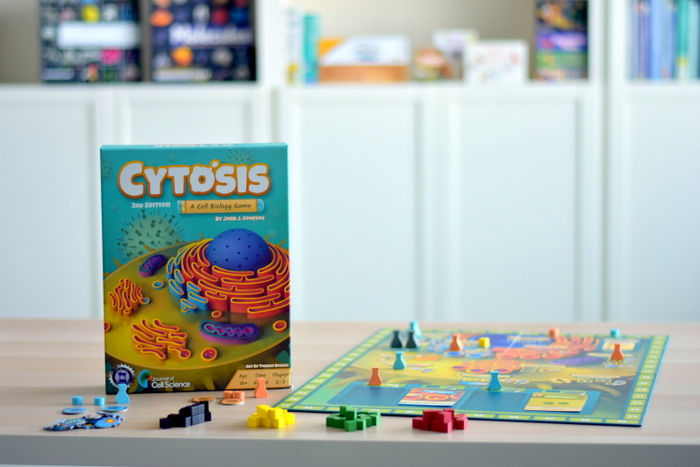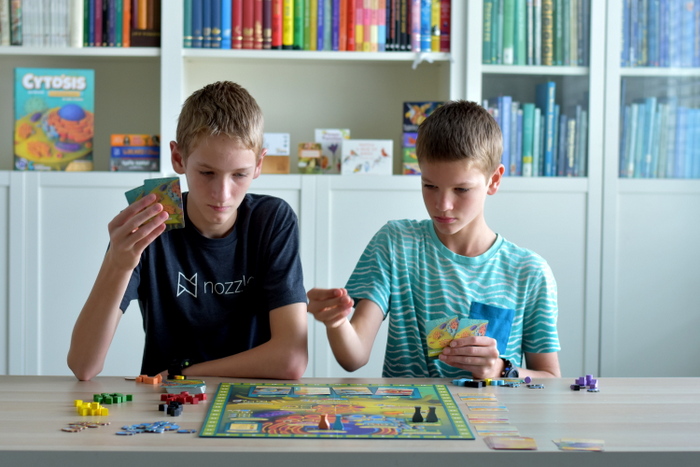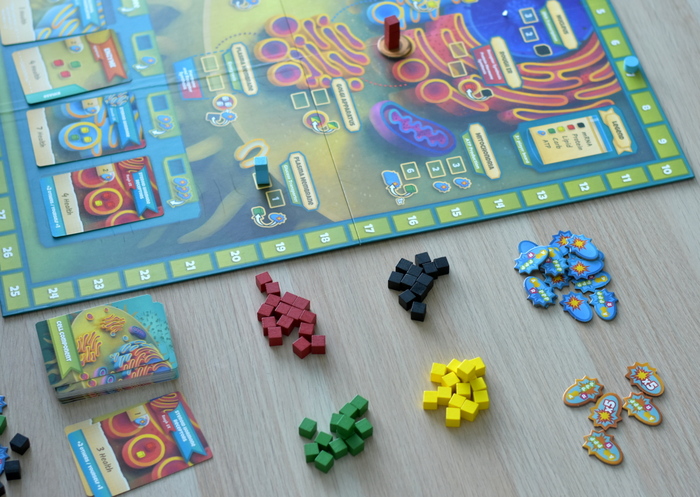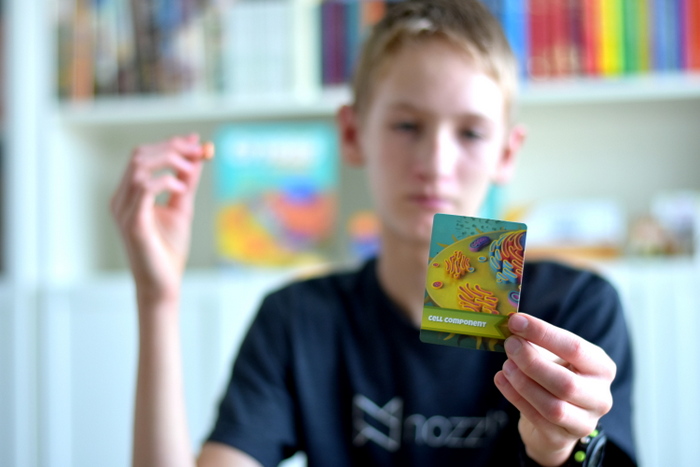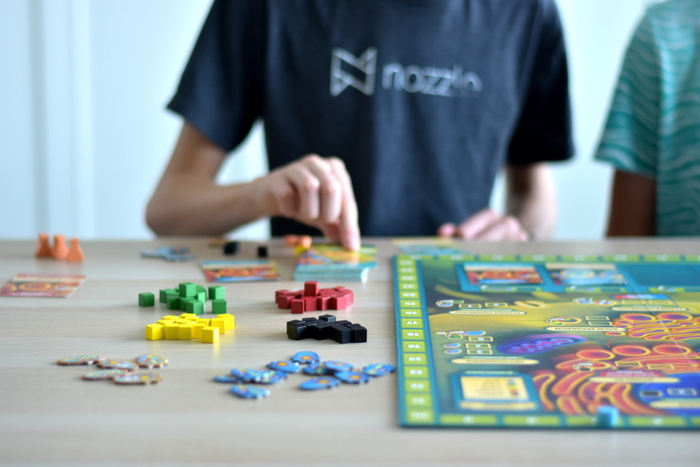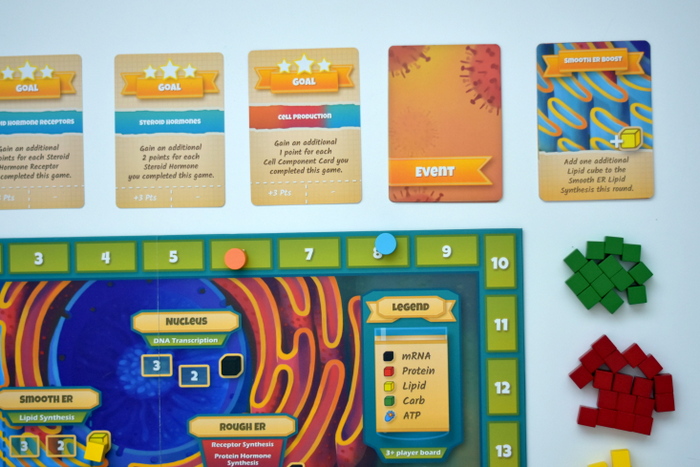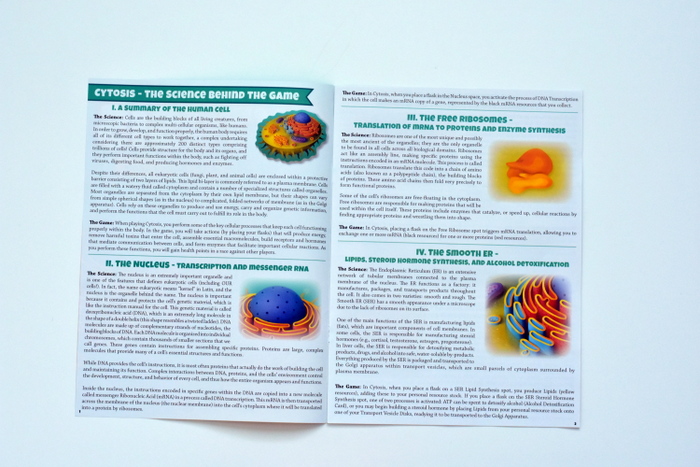Age: 10+
Players: 2-5
Playing Time: 60-90 minutes
Category: Strategy/Board
Gameschool Area: Science/Biology
Price: $35
Publisher: Genius Games
How would you like to learn more about cell biology?
There are plenty of ways to learn/study biology that will bore you to tears, but I think the best way to become familiar with the fascinating subject is to…play a game!
I have yet to find a subject that I can’t teach in some way with a game, and believe it or not, some of the best games we have played have been built around science topics that I was terrified of in school, like biology!
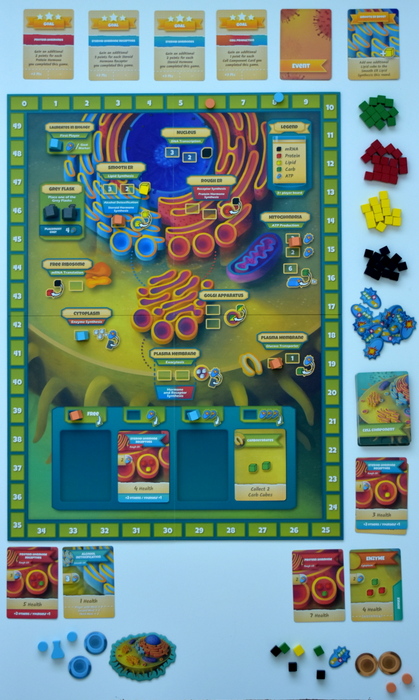
Cytosis is a strategy game that takes place inside of a human cell. Players earn resources (mRNA, protein, carbohydrate, lipid, and ATP) to complete/earn Cell Component Cards (build enzymes, hormones, and/or receptors) to earn Health Points, the currency of the game.
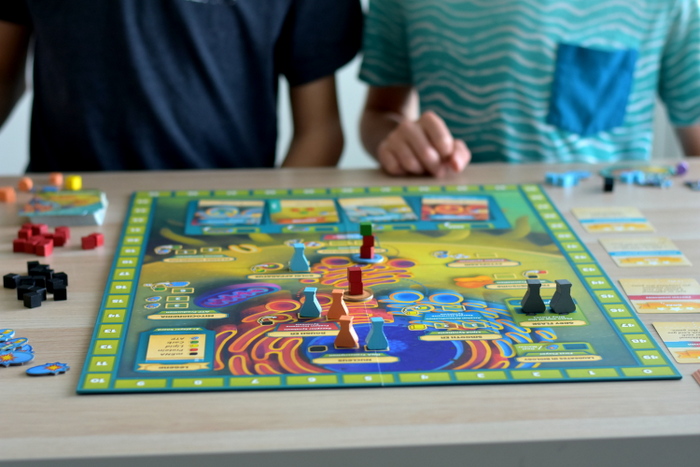
Players place their colored flasks around the board to earn the resources and covert them into enzymes and hormones, etc.
The game is played in rounds.
- Round 1: Players place flasks, collect resources, and take actions to complete Cell Component Cards.
- Round 2: The board is refreshed and an Event Card, which change up the game each round by affecting the game in some way.
The board and the pieces are excellently illustrated and designed and help kinesthetic and visual learners to understand what happens in a cell by moving through its different parts, using the resources it actually uses, and creating some kind of cell component. The game helps familiarize students/kids/adults/anyone! with cell terminology and basic functions.
Cytosis is a fantastic way to introduce, study, and/or just have fun with biology!
Cell Component Cards are the main focus of the game, as resources are used to “purchase” them and health points are earned when they are completed. They are what motivate the player to move through the different parts of the cell – the Rough and Smooth ER, the Golgi Aparratus, the Plasma Membrane, the Cytoplasm.
There are 5 different kinds of Cell Component Cards:
- Hormone
- Hormone Receptor
- Enzyme
- Alcohol Detoxification
- Additional Resource Cards
The science in the game is accurate – some resources can only be traded for others to be earned, replicating how a cell actually works, and the process of moving resources through the cell is realistic and incredibly informative!
Extra points can be earned throughout the game by being the first person to place a token on a goal card. Goal and event cards are different every game, making the entire play through unique each time.
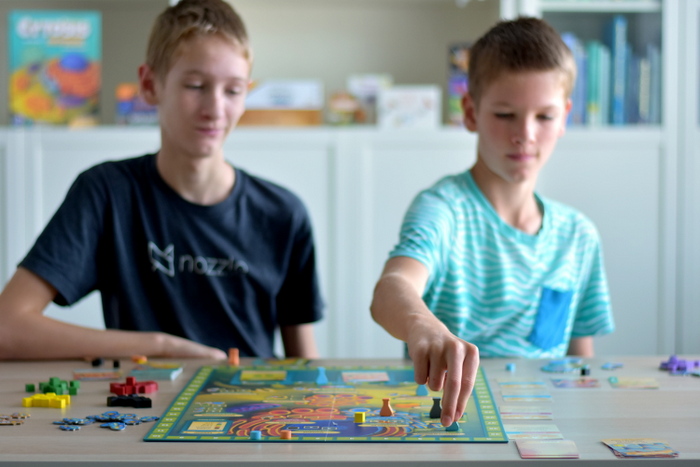
Sound strategy is definitely required, there’s an element of luck, and players can thwart each other by filling up certain spots on the board since players may only place flasks on unoccupied spaces. (There’s an exception to this rule, you’ll just have to play to see what it is!) The thwarting possibilities always make for a more exciting experience, and my boys love that extra competitive and strategic element to a board game.
We have all learned so much foundational information about cells from playing this game and reading the accompanying “Behind the Science” booklet. We read a bit every time we play so as to take in all the interesting information slowly. I find that understanding more about the science behind the game makes it even more interesting and satisfying to play.
Not only is this a great educational science game, it’s just a fun strategy game as well. My boys choose to play this one during school and free time, it’s a genuinely fun game for a homeschool, classroom, or game night setting. We think you’ll love it!
{Thanks to Genius Games for sharing this game with us!}
